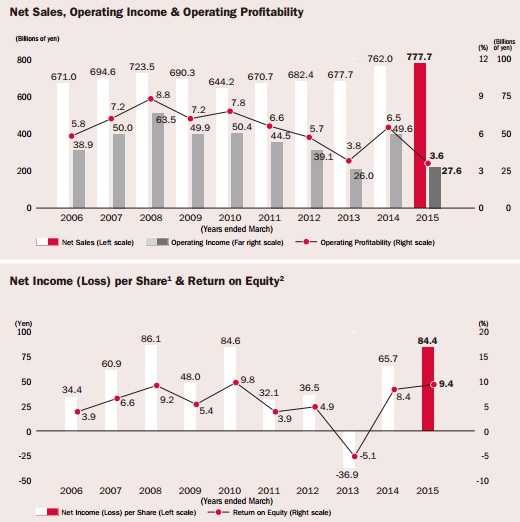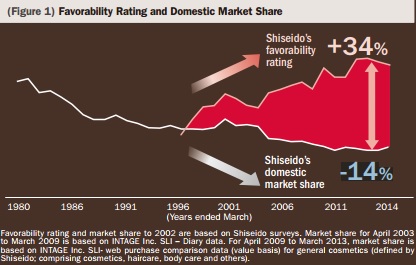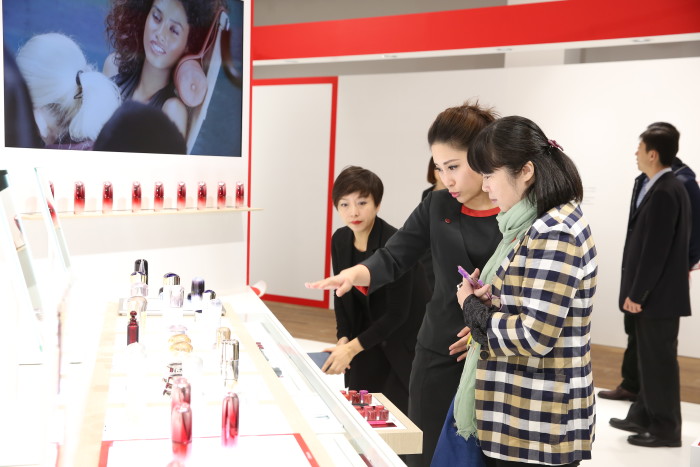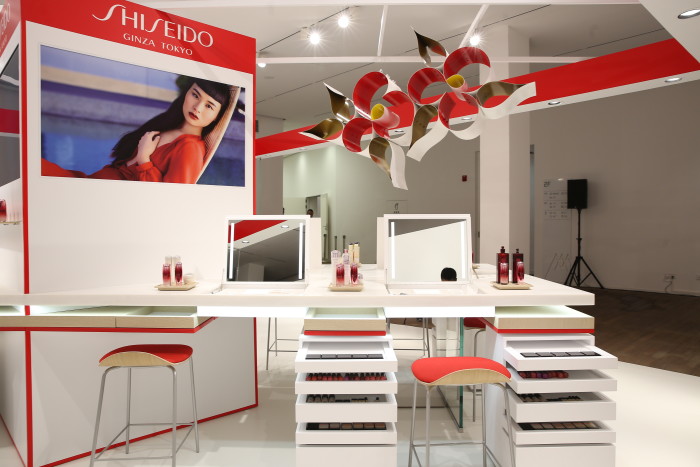
What’s behind Shiseido Ginza Tokyo
share on
From a sales director at Lane Crawford, Lab Concept vice-president to now the Shiseido Hong Kong president, luxury fashion veteran Morgan Tan seems to have lived a glamorous life.
But the reality behind these big titles may not be as enviable as it appears. Just like her boss Masahiko Uotani, appointed Shiseido president and CEO two years ago, Tan joins Shiseido Hong Kong with a big task to keep a sinking ship afloat.
It’s no secret that the first western-style pharmacy in Japan, established in 1872, has been in the wilderness for a decade, suffering from slow sales growth and shrinking domestic market share by -14% as of 2014.
In the company’s latest annual report, president and CEO Uotani highlighted the challenges that have long troubled the 144-year-old business, which is failing to stay relevant to constantly changing consumers and markets.
To address the problem, the new management team announced an ambitious and long-term sales acceleration strategy – Vision 2020 – targeting more than ¥1 trillion in sales by 2020 from last year’s ¥778 billion.
“Given that the world is going through globalisation and the rise of the Millennial, we thought that it was important to set a new vision to prepare ourselves for the next 100 years,” says Tan from the Shiseido office in Kowloon Bay.
One key effort to achieve this “visionary” goal is a brand overhaul that spans 88 markets globally, while looking to stay relevant with the skincare routine for women at any age around the world.
Launched in January, the three-year makeover includes a new brand name “Shiseido Ginza Tokyo”, a refreshed brand philosophy of “empathy”, a worldwide campaign that highlights the diversity of races, a string of digital enhancement plans as well as a renovation of its outlets.
The revamped logo is a mixture of legacy and modernity in which Ginza, a district in Japan where Shiseido originated from, and Tokyo, where Shiseido is now based, are added to emphasise the brand’s international image while honouring its heritage.
“Because of digital, the world has become so much smaller; today’s women have a lot in common across the world, and they want to share,” she says.
“The term ‘empathy’ is our way of saying – I know you are beautiful, and you know she’s beautiful; together, we celebrate. Shiseido aims to become a vehicle for women to feel good about themselves and to show appreciation to others.”
To deliver this message, a lot has been put into strengthening the brand’s digital presence to tap into young females around the age of 25.
“When you talk about the new generation, we see them engaging in digital in a different way – they want to share.”
Digital is like a current of electricity; it’s not something fancy, it depends on how we use it to communicate.
Like many brands, Shiseido is primarily focused on social media outlets to build a rapport with consumers. But social media can be a double-edged sword if executed incorrectly. Higher exposure on social media means a higher chance of getting caught up in a PR crisis.
"Companies should not just react to a crisis, but to underline and address it, managing it in a more holistic way.”
Social media will continue to test companies, and the maturity on how they manage it.
“It’ll be interesting to see how companies evolve because engagement is playing such an important role. How far would you allow that engagement until it becomes disrespectful or negative, and what is negative, are some big topics.”
The rapid growth of digital and social media has been pushing brands to move into e-commerce. But Shiseido is taking it slowly, with its online business available only in the US, Japan and China, a market where 15% of its transactions comes from online.
In Hong Kong, Shiseido’s digital commerce strategy is incorporated as an integral part of the customer journey in the form of digital receipts, service reservations or subscriptions.
“E-commerce is not just going online, making a purchase and receiving a shipping; it should be part of a holistic digital experience.
“Everybody uses a smartphone first thing in the morning, so how to use mobile as a channel is going to be critical. Digital commerce is not necessarily a shopping channel, but a communication channel. Companies still definitely need to focus on digital, but it’s not necessarily going to be e-commerce.”
Women may love to shop for fashion and accessories online, Tan adds, but beauty products is another story.
“E-commerce for skincare products in Hong Kong is not impossible, but we’ll take it step by step.”
To support its digital transformation, the Hong Kong office is looking to set up a digital team to spearhead all digital-related practices, sitting on top of its CRM and IT divisions. Together, the teams will be responsible for a big digital facelift with a new mobile application coming up, which will play an even bigger role than its website in connecting customers online.
“People go on websites to search for store locations, new products or to make a booking. Until we have a clear strategy for e-commerce I don’t think it’s necessary to tamper with the site. The app becomes a nice bridge for customers to tap into and find out information that’s relevant for them. It facilitates the cascading of information.”
To tie in with the new brand philosophy of “empathy”, maintaining a consistent branding image across online and offline is a major part of the brand rejuvenation, Tan says.
On that note, Hong Kong will be one of the first markets to have brand expression in a physical format, incorporating what it calls a “social counter”, inspired by the famous “Apple table”, in two to three Shiseido physical outlets, and beauty counters to better connect visitors with front-line staff and its products.
The new counter design will see less fixtures and boundaries blocking shoppers from entering its territories in order to make visitors feel like they are already part of the counter without walking through the fixtures. The idea is referenced on how women shop today, Tan stresses.
“People don’t buy make-up and skincare products separately, they tend to mix and match. Just like fashion – people normally take up the whole outfit; I think department stores probably need to rethink how they merchandise.”
Indeed, a strategy review seems to be becoming necessary for retailers in Hong Kong, as the retail market has taken a hard blow following the decline of big-spending Mainland tourists. In 2015, 37% of Shiseido customers were from China, yet, this is a number that Tan considers low.
“Given the recent climate, Shiseido is less disposed to the risk. The majority of our business has always been from locals, which is a testimony to our attention to customer service. We put in a lot of effort to ensure our front-line staff are always patient and won’t rush through a transaction. They are going to help customers find the perfect products for their skins.
“Especially now when times are tough, we have to make sure we have a solid foundation in place.”
share on
Free newsletter
Get the daily lowdown on Asia's top marketing stories.
We break down the big and messy topics of the day so you're updated on the most important developments in Asia's marketing development – for free.
subscribe now open in new window





